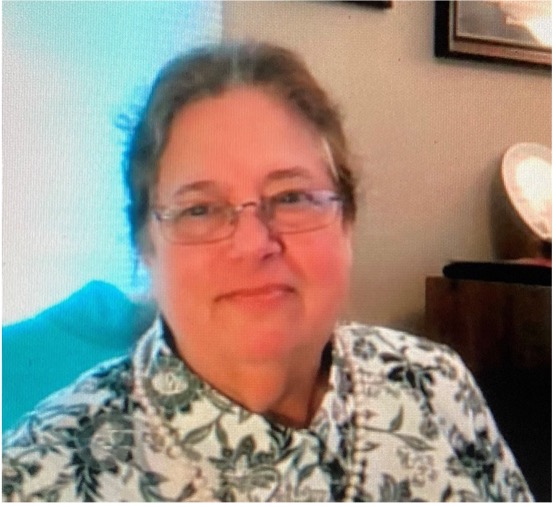|
2021 Society for Glycobiology Distinguished Service Award
Dr. Pamela A. Marino
 How to recognize those who have given distinguished service to the field has been a topic of discussion in the Society for Glycobiology for several years now. In response, the SfG Board of Directors has formally established the Distinguished Service Award, which is intended for individuals with a “sustained record of distinguished service to the Society for Glycobiology and/or the glycobiology community.” With great pleasure, the Board has unanimously selected Dr. Pamela A. Marino as the recipient of the inaugural SFG Distinguished Service Award. How to recognize those who have given distinguished service to the field has been a topic of discussion in the Society for Glycobiology for several years now. In response, the SfG Board of Directors has formally established the Distinguished Service Award, which is intended for individuals with a “sustained record of distinguished service to the Society for Glycobiology and/or the glycobiology community.” With great pleasure, the Board has unanimously selected Dr. Pamela A. Marino as the recipient of the inaugural SFG Distinguished Service Award.
Dr. Marino graduated from the University of Connecticut, Storrs in 1973 with a Bachelor of Arts, Cum Laude, in Biology. She then joined the Pulmonary Biochemistry Laboratory in the Department of Medicine at the Yale Medical School as a Research Assistant. She subsequently joined the Pediatric Pulmonary Biochemistry Laboratory headed by Dr. Seamus Rooney in the Department of Pediatrics, where she rose to Research Associate and then to Laboratory Supervisor and established an animal model system for the study of surfactant synthesis and secretion. Her work resulted in six manuscripts on the synthesis and secretion of lung surfactant including two as first author. At the urging of her mentor Dr. Rooney, she entered graduate school in 1980 to study with Dr. Mary Jane Osborn at the University of Connecticut Health Center in Farmington where she received her Ph.D. in Biomedical Sciences/Molecular Biology-Biochemistry for her work on the energy dependence of the synthesis and secretion of lipopolysaccharides and O-antigen. She was awarded an American Cancer Society Post-doctoral Fellowship (1986) to study with Dr. Ira Pastan at the NCI Laboratory of Molecular Biology where her work focused on regulation of the multidrug resistance gene. In 1989 she was appointed as a Senior Staff Fellow at NCI. Subsequently, she accepted an appointment as Senior Staff Fellow, Tenure Track, at the Center for Biologics Evaluation and Research at the FDA where her laboratory focused on studies of multidrug resistant tuberculosis. In 1994, she joined the National Institute of General Medical Sciences as a Health Science Administrator, working First in the Division of Training, Workforce Development and Diversity, and subsequently as a Program Director in the Division of Pharmacology, Physiology and Biochemistry. In 1998 she took on additional responsibilities as the Co-Director of NIGMS’s sole intramural effort, the Pharmacology Research Associate Program, which trained 15-20 postdoctoral fellows a year. In 2013, Dr. Marino was promoted to Chief of the Chemistry and Bio-related Chemistry Branch, Division of Pharmacology, Physiology, and Biological Chemistry at NIGMS, and in 2014 she took on additional duties as a Project Team Leader and member of the Working Group for the NIH Office of Strategic Coordination, Common Fund Glycoscience Program. Dr. Marino now serves as Senior Scientific Program Manager, Kelly Government Solutions, assigned as a Working Group Coordinator to the NIH Office of Strategic Coordination, Common Fund Glycoscience Program.
Dr. Marino is known to virtually all in the Glycobiology/Glycoscience field because of her vision and advocacy for the field, its researchers and students, as well as the mentorship she provides at conferences, such as the Society for Glycobiology Annual Meeting, explaining NIH programs and the inner workings of grant processes. She was the driving force behind the establishment of the highly successful Consortium for Functional Glycomics (CFG), a ten year multi-million dollar “experimental glue grant” in big team-driven science. The CFG established both precedent for open access team science and critical technologies that continue to have exceptional impact on the field today, such as: the production of large libraries of synthetic glycans with diverse motifs that are recognized by glycan binding proteins; the use of microarray technologies to immobilize these glycans and interrogate them with potential glycan binding proteins; and the development of databases and informatics tools for microarrays and the integration of this data with other diverse datasets to predict biological function. The CFG also took important steps to organize glycoscientists by sub-specialty, foster interactions between its participants, and provide open access to the data it generated. The impact of the CFG (in terms of the precedent it set for open access team driven science, the publications it generated, and the follow- on grants it fostered) on the Glycoscience field is overwhelmingly positive. For her efforts as the Program Director for the CFG, Dr. Marino received the 2007 NIH Director’s Award, “For insight, initiative, and leadership as the program manager for the Consortium for Functional Glycomics.”
Moreover, Dr. Marino was instrumental in the establishment of the NIH Office of Strategic Coordination’s Common Fund Glycoscience Program (CFGP). The CFGP has continued to build the necessary infrastructure/tools for both doing Glycoscience and integrating the field with other disciplines. For example, it’s development of chemical methodologies and their automation have expanded access to diverse multi-antennary glycan libraries critical for advancement of the field, and the suite of tools it has developed for sequencing, labeling, and modeling glycans are facilitating studies in multiple biomedical disciplines from virology and immunology to cancer and degenerative brain diseases. The CFGP as uniquely designed, promotes the commercialization of its work, including commercialization efforts through the NIH SBIR/STTR program. As envisioned by Dr. Marino, commercialization has led to many of the programs tools and reagents being commercially available to all researchers, not just Glycoscientists, thus expanding the sphere of research that focuses on the function of glycans in physiology and disease/disorders.
|